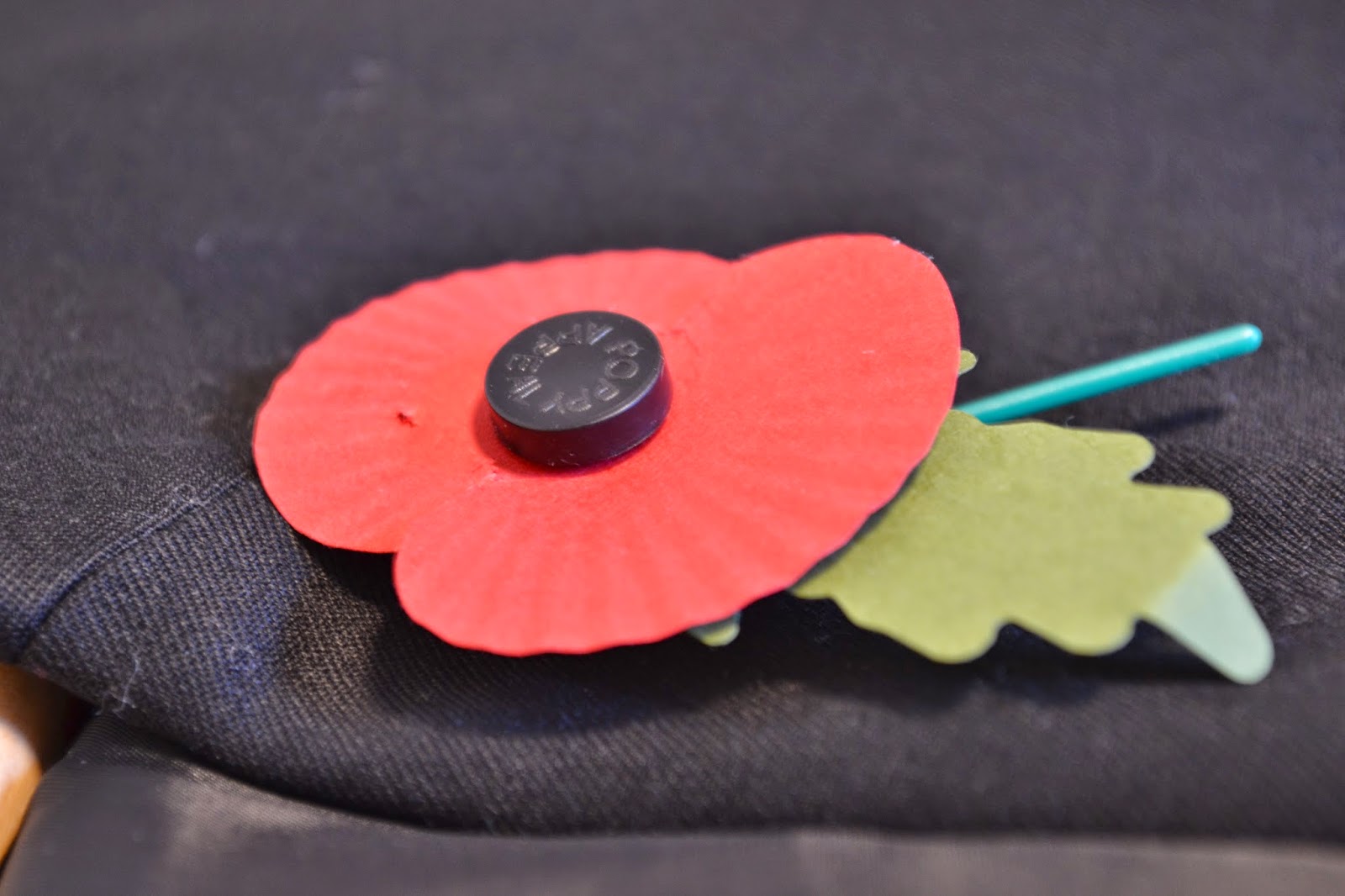Poppies and Wreaths
 |
| Royal British Legion poppy Photo Credit: Cristiana Ferrauti |
Flower wreaths decorate the significant sites where Unknown Soldiers rest.
The President of the Italian Republic laid a wreath on the Altar of the Fatherland (Milite Ignoto), in Rome, on 4th of
November.
Two days after, in London, Queen Elizabeth the Second made the samegesture, by laying a poppy wreath in the Flanders Memorial Garden.
One hundred years ago, the First World War started
and it ended only in the 1918, with the loss of too many lives which are
commemorated during this month.
Paper, knitted, metallic, pinned to the collar of a
coat or of a jacket, red poppies are widespread among the Londoners who crowd
the Tube, the streets, and the shops.
Even by a look at the ground, you may find a red paper poppy fallen from the clothing of a person in a hurry.
Even by a look at the ground, you may find a red paper poppy fallen from the clothing of a person in a hurry.
Used since the 1921 by the American Legion, the
floral symbol was afterwards adopted by the Royal British Legion for the same
meaning: to commemorate the soldiers who lost their lives during the First
World War.
The bright petals were inspired by the war poem “In Flanders Fields”, written by Lieutenant Colonel John McCrae during the first
worldwide conflict.
He told that poppies were the first plant which grew in Flanders - a region in the north part of Belgium- where many soldiers died.
He told that poppies were the first plant which grew in Flanders - a region in the north part of Belgium- where many soldiers died.
On Thursday 6th of November, several events in London opened the week ahead the Remembrance Day – on 11th
of November.
The Queen attended the opening of the Flanders Memorial Garden, while
Prince Harry laid a wooden cross on the grave of Unknown Soldiers in the Field
of Remembrance – now at its 86th event.
The cross is one of the many wooden tokens which marked the lawn of St Margaret’s Church – between Westminster Abbey and the House of Parliament-, the memorial setting annually arranged by the Royal British Legion.
The garden will last for eight days, from its opening on the Thursday before the Remembrance Day.
The cross is one of the many wooden tokens which marked the lawn of St Margaret’s Church – between Westminster Abbey and the House of Parliament-, the memorial setting annually arranged by the Royal British Legion.
The garden will last for eight days, from its opening on the Thursday before the Remembrance Day.
 |
| Il Milite Ignoto - the Unknown Soldier Photo Credit: Renzo Ferrante https://www.flickr.com/photos/erreeffe/ https://creativecommons.org/licenses/by/2.0/legalcode |
In the 1918, during the same day, the Victory
Bulletin announced the surrender of the Austro-Hungarian Empire, according to
the armistice signed with Italy at Villa Giusti, near the city of Padova.
One year later, with the Saint-Germain-en-Laye treaty, Italy succeeded in gathering the territories of Trento and Trieste, with the result of the National Unity.
This was the end of the First World War for the country.
One year later, with the Saint-Germain-en-Laye treaty, Italy succeeded in gathering the territories of Trento and Trieste, with the result of the National Unity.
This was the end of the First World War for the country.
During this date, Unity
Day is celebrated as well as the Armed Forces.
[if the video does not download properly or it takes too much time, you can watch it here: Napolitano laid a wreath on the Altar of the Fatherland]
Comments
Post a Comment